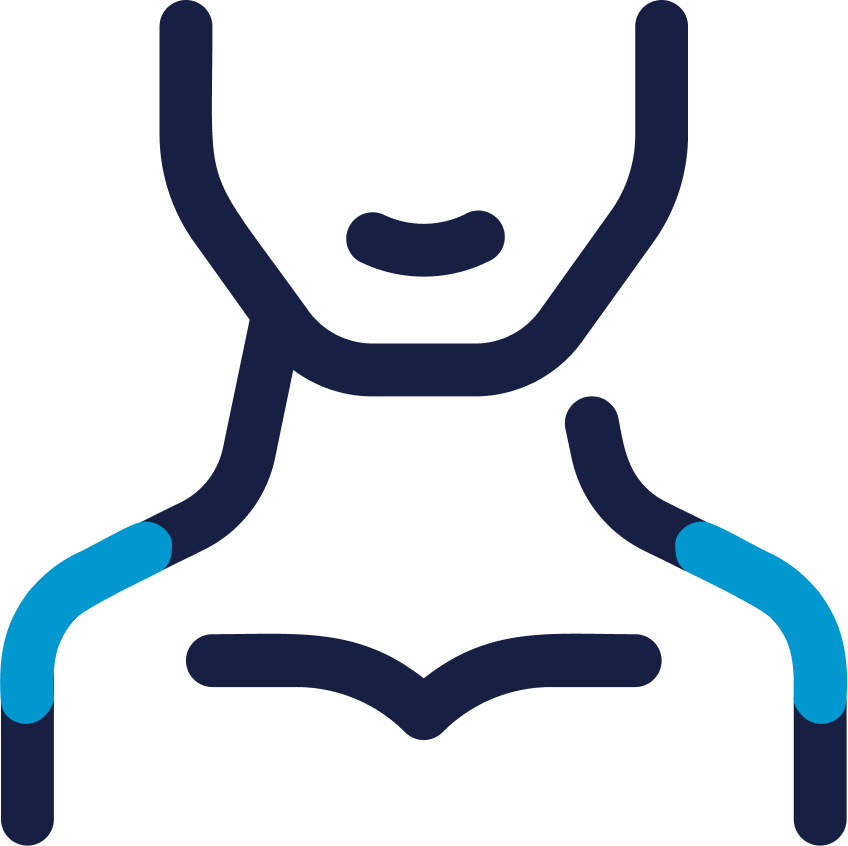
- Common Conditions
- /Shoulder

The shoulder is the most mobile joint in the human body. Because it is so flexible, the shoulder is highly susceptible to instability and injury. Acromioclavicular (AC) joint separation, more commonly known as a separated shoulder, is one of the most common shoulder injuries.
Acromioclavicular (AC) joint separation happens when the ligaments that attach the collarbone to the shoulder blade become injured or separated. The severity of this injury can range from mild to severe. In mild AC separation, the ligaments are stretched, while in severe cases, the ligaments are completely torn.
The symptoms of an AC separation vary, according to the severity of the condition. Symptoms can include:
There are several causes that can lead to the development of an AC separation. These causes include:
There are several factors that can increase your risk of developing an AC separation, including:
The first step in diagnosing an AC separation involves discussing the history of the patient’s injury and a thorough evaluation of the patient's shoulder. During the initial examination, a medical care provider will assess the shoulder, looking for signs of a fracture or dislocation. The orthopaedic surgeon will also feel the bones and the soft tissue around the joint and between the clavicle and the acromion.
After the initial evaluation, the orthopaedic surgeon will further evaluate the patient’s condition, and this may include:
If a shoulder separation is found, it will be classified by the extent or the severity of the injuries. These classifications include:
Both surgical and non-surgical methods can be used to treat an AC separation.
The recovery process depends on the grade of the injury, and varies from patient to patient. The more minor injuries generally heal within weeks, while the more serious injuries may require surgical correction and take several months in order to restore normal function. Formal physical therapy is highly suggested to restore and rebuild strength, motion and flexibility.
In many cases, AC joint separation does not require surgery to heal. While surgery is sometimes a necessity, most patients recover well using more conservative treatments, such as anti-inflammatory medications, icing the shoulder to reduce swelling and pain, or stabilizing the arm in a sling for a couple of weeks.
Sometimes, taping is used as a means to reduce pain in the shoulder, provide support in the area, and promote faster healing. Physical therapy may be necessary once a certain level of healing has been accomplished. Dr. O’Grady and his staff encourage anyone with this type of injury to schedule an appointment and take advantage of the cutting-edge treatment options and expert care O’Grady Orthopedics has to offer.
There are a variety of symptoms related to AC separation injuries. They will vary according to the severity of the injury, the nature of how the injury occurred, and the pain tolerance of the individual.
Most people with AC joint separation will experience pain at the top of the shoulder. This pain may be exacerbated when you move your arm overhead or sleep on the injured shoulder. You may also experience weakness or instability in the affected shoulder or arm as well as limited mobility.
Some patients complain of bruising and swelling, popping noises when moving the shoulder, and one shoulder appearing to “hang” lower than the other.
AC joint separation is an injury that occurs with varying severity. As a result, there is a rating system that will determine the severity and most appropriate treatment for your AC separation injury. There are six grades assigned to AC joint separation with grades one through three representing less severe cases that can often be treated without surgery, though there are some instances when grade three AC joint separation requires surgery.
Grades four through six will almost always require surgery to repair the damage. In most cases, your orthopedic surgeon will work to reconstruct the ligaments. Sometimes pins or plates are used to promote stability in the area. Whenever possible, your surgeon will seek to use minimally invasive surgical techniques that do not require complete immobilization following the surgery and significantly reducing your recovery time.
AC joint separation injuries can be caused by a variety of factors, including falls, auto accidents, and sports injuries. Those who participate in contact sports, such as hockey or football, or sports where falls are common are at greater injury for AC joint separation.

